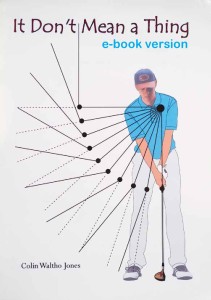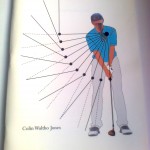Will this book help beginners?
Again from the “Keith” essay, I argue that for natural learning to take place there needs to be certain conditions in place. First, it needs to be an activity that has some meaning or benefit to you (eg eating). Second, it needs to be an activity that you can repeat over and over again. Third, there needs to be some benefit to you from becoming competent at the activity.
If you have just taken up a sport that involves hitting or throwing then you are at the start of a journey towards physical competence at that task. Taking instruction is a form of short-cut; someone who has been along that journey already will share insights with you that may help you to avoid well known pit-falls.
To reach a state of competency, “timing” is the most important thing you have to learn, but it is not the only thing. If you follow the recommendations in the book, you will learn to “time”, and you will definitely speed up your journey to competency, and there will definitely be less set-backs along the way.
Will this book help good players?
By definition, good players have become good players because they are able to locate their “timing” most of the time. However, there is the ever present spectre of “form”.
“Form” is the word used by players to describe variations in competency as expressed in results. The single biggest influence on their “form” is “timing”. Actually, once you understand the role of “timing” in hitting and throwing sports then you will see that “form” is the result of how well you are locating your “timing”.
The danger of “form” is that players who feel themselves “out of form” can often seek solutions to their perceived poor “form”, and the quest for solutions can often be damaging to the players natural level of competency.
One of the many advantages of understanding how “timing” works, and its role in hitting and throwing sports, is that a player’s “form” will vary much less because the player concentrates on those things that will make it more likely that his “timing” is located, which makes it more likely that the outcome of each and every shot will be successful.
Does this book work for all sports?
It works for all sports that involve hitting or throwing. The action of hitting or throwing something accurately requires “timing”; if the hit or throw is “timed” then the “shot” will be close to being perfect; the more perfect or near-perfect shots you produce the better you play.
Whatever hitting or throwing sport you play, you can read that paragraph and get it to apply to your sport.
All I can say is that knowing how to get better (or as my Dad put it “knowing that you’ll never play badly again”) is very exciting and very rewarding.
Is it an instant cure?
Yes.
Granted, it is not easy getting your muscles to behave differently but neither is it impossible. To get yourself to “time” a shot in the benign conditions of a private practice session is relatively straightforward; and once you locate “timing” the feeling of control over the shot is intoxicating and you want never to lose it. However, getting yourself to “time” a shot under competitive conditions is difficult but a fantastically rewarding challenge.


